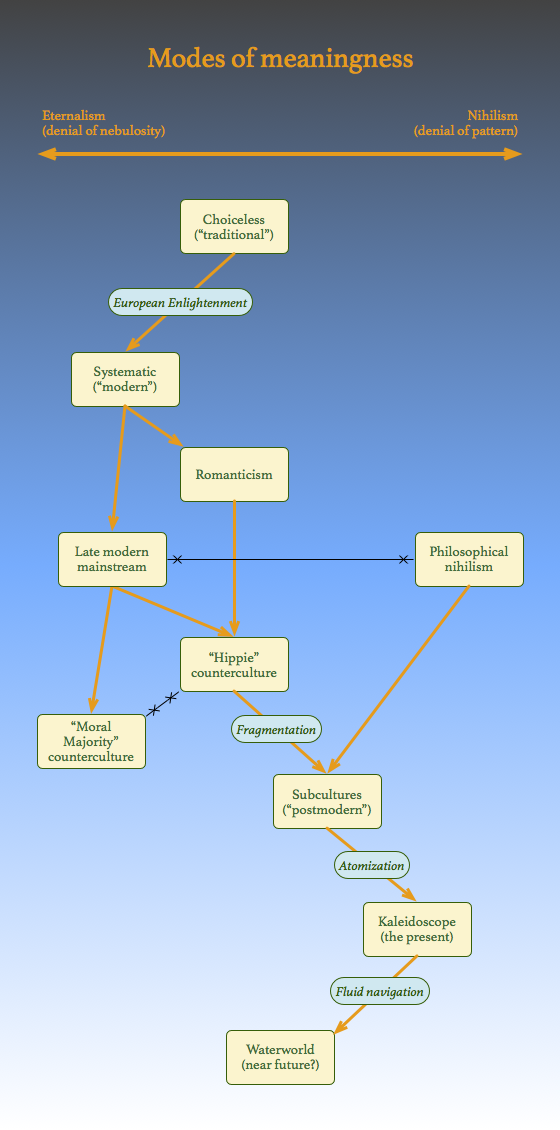The diagram below summarizes the historical motions of modes of meaningness.
Time flows from top to bottom. The horizontal axis locates modes with respect to eternalism and nihilism—the denials of the nebulosity and patterns of meaningness.

The details of this chart should not be taken too seriously. In particular, relative horizontal motions are meant to be meaningful, but not their absolute positions. For instance, the fluid mode (“Waterworld”) should be less nihilistic than the atomized mode (“Kaleidoscope”), but trying to locate it relative to the subcultural mode probably makes no sense. I have, however, put the fluid mode exactly in the center, to indicate that it should avoid both eternalism and nihilism.
The black lines with crosses on them indicate opposition. In both cases, there’s influence as well as conflict. Philosophical nihilism did flow into the “late modern mainstream” of the 1950s, although that was denied. The dualist “Moral Majority” counterculture borrowed heavily from the monist “hippie” counterculture, although it mostly didn’t admit that. In fact, every mode of meaningness has taken pieces from every past and contemporary one. Creating meaning is hard, and great artists steal whenever they can.
The atomized kaleidoscopic mode is furthest over toward nihilism (not counting philosophical nihilism, which is mainly theoretical). However, full nihilism denies all meaning; whereas the problem in the atomized mode is more that there is too much meaning, than too little. It has just lost the coherence of pattern, and so becomes senseless and overwhelming.
